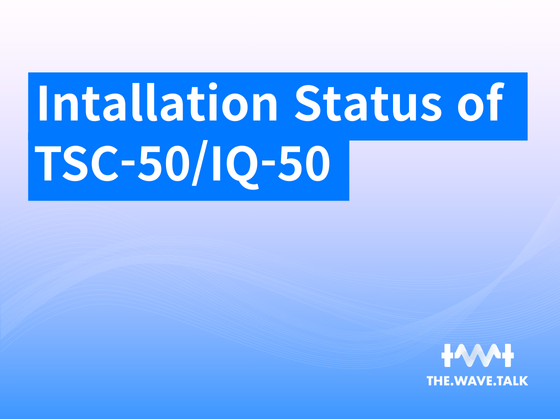How Pipeline Monitoring Transforms a Smart Water City (SWC)
- (더웨이브톡) 마케팅
- Dec 31, 2024
- 3 min read
Urbanization, Water Challenges, and the Rise of Smart Water Cities

The United Nations (UN) predicts that by 2050, more than 70% of the global population will reside in urban areas. Rapid urbanization intensifies water-related challenges, such as leakage, water quality degradation, and flooding, which are further exacerbated by climate change. These issues place significant strain on urban management systems, driving the need for innovative solutions.
Enter the concept of the Smart Water City (SWC)—a forward-thinking approach that leverages advanced Information and Communication Technologies (ICT) like big data and AI to monitor and manage urban water systems in real time. SWC shifts from reactive responses to proactive strategies by continuously tracking pipelines and treatment facilities, detecting anomalies, and preventing issues before they escalate. This paradigm not only enhances water quality and operational efficiency but also offers a comprehensive solution to pressing urban water challenges.
Trends in Smart Water Cities
Major cities in Europe, such as Barcelona in Spain and Copenhagen in Denmark, have implemented pilot SWC projects. These initiatives use real-time sensors to mitigate river overflow during heavy rainfall and reduce urban water leakage.
Meanwhile, several U.S. cities have introduced pipeline condition monitoring systems that use historical water quality data and AI technology to predict maintenance and replacement schedules. International organizations like the International Water Resources Association (IWRA) and the Asia Water Council (AWC) are actively supporting these efforts, providing global standards and key performance indicators (KPIs) to foster the growth of SWC initiatives.
Limitations of Traditional Pipeline Management and the Role of Real-Time Turbidity Monitoring
Despite the promising potential of SWCs, pipeline management largely remains reactive. Aging infrastructure makes it difficult to identify problems early, leading to severe leakage or contamination that only garners attention after significant damage has occurred. This reactive approach results in high repair costs, wasted time, and increased public concern over safe drinking water supplies.
One major reason for consumer distrust of tap water stems from risks associated with pipeline contamination rather than water treatment itself. Aging pipelines and outdated household plumbing often introduce microorganisms and suspended particles, prompting consumers to rely increasingly on bottled water or filtration systems.
To address these challenges, real-time sensing and predictive maintenance are critical, with turbidity monitoring playing a pivotal role. Turbidity data measures suspended particle concentrations in water, enabling early detection of leaks or contamination. By monitoring turbidity across pipeline networks, it is possible to pinpoint affected areas, focusing repairs only where needed, thereby significantly reducing overall maintenance costs. Furthermore, this ensures a consistent supply of safe and clean drinking water, alleviating public concerns.
A New Era of Pipeline-Specific Water Quality Monitoring

1.Ease of Maintenance and Calibration
Extended Maintenance-Free Operation: TheWaveTalk's innovative miniature turbidity sensor is the world's first to remain unaffected by biofilm buildup. It significantly reduces the burden of periodic calibration and maintenance required every few months with traditional turbidity meters.
Automatic Calibration: With each measurement, the sensors self-calibrate, eliminating the need for manual calibration by technicians. This not only saves resources but also ensures consistently accurate data.
2.Localized Water Quality Monitoring
Compact and Modular Design: Small, easy-to-install sensors can be deployed in pipelines, pump stations, and treatment facilities, enabling granular monitoring previously unattainable with legacy systems.
High-Precision Detection: Capable of identifying minute turbidity changes, the sensors swiftly detect early-stage contamination or leaks, enabling rapid intervention.
3.Real-Time Monitoring and Predictive Maintenance
Cloud Integration: Sensor data integrates seamlessly into SCADA systems or IoT dashboards, providing continuous visibility into pipeline conditions.
AI-Powered Predictive Analytics: Historical turbidity patterns and failure data are processed through big data and AI algorithms to predict potential failures, enabling preemptive repairs and cost savings.
Expected Benefits and Recommendations
1. Water Quality Stability:Real-time monitoring and rapid response mechanisms ensure the delivery of clean and safe drinking water to citizens.
2. Operational Efficiency:Targeted repairs minimize the need for large-scale interventions, reducing resource waste and budget overruns.
3. Sustainability:Lower leakage rates and energy consumption make urban water management systems more resilient to climate change and population growth.
4. Pipeline-Specific Management:The ability to monitor individual pipeline sections provides comprehensive data on network conditions, facilitating systematic and predictive maintenance strategies.
International bodies like IWRA and AWC emphasize the importance of real-time sensing and predictive maintenance as the cornerstone technologies for SWC projects. Tailoring KPIs to specific urban needs and leveraging advanced sensors like TheWaveTalk’s maintenance-free and high-precision models can transition cities from reactive to proactive, intelligent water management systems. Ultimately, integrating these technologies will revolutionize pipeline operations, fostering public confidence in tap water and building sustainable, efficient urban water systems for the future.


